Subscribe today to receive the next issue of Game Informer, featuring the Most Anticipated Games of 2026!
From The Vault: Nintendo's Handheld History
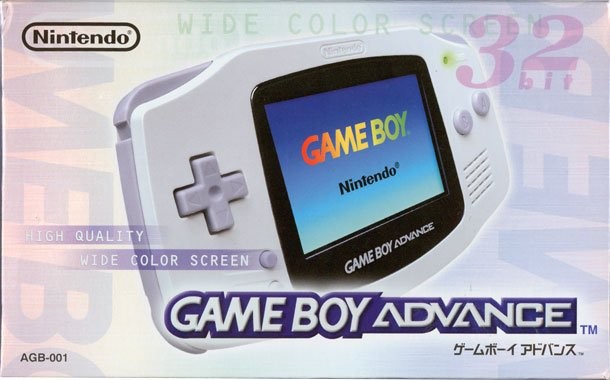
Yesterday’s announcement of the 3DS has many gamers reflecting on Nintendo’s long lineup of handheld game consoles. From minor updates to massive hardware changes, Nintendo has been driving the evolution of portable gaming for over 20 years – and we’ve been there for it all. Join us for a visual look back at the history of Nintendo's handhelds.
Game
Boy
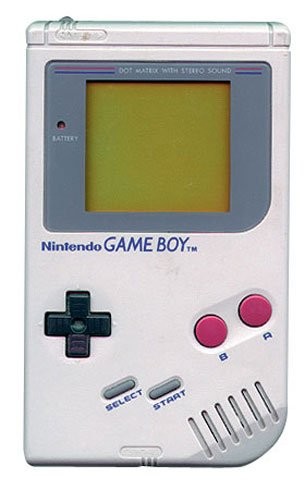
Release: 1989
The first Nintendo handheld to use detachable cartridges. The Game Boy featured a monochromatic LCD screen capable of displaying four different shades of grey, and a serial port for local multiplayer. For most gamers the Game Boy is synonymous with Tetris, which sold over 35 million copies worldwide.
Play It Loud!
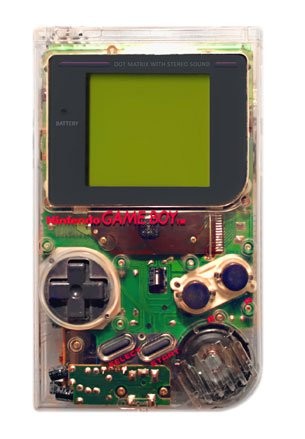
Release: 1995
Identical to the original Game Boy’s hardware, the Play It Loud! series introduced different colored cases, which became a standard for Nintendo’s handheld lines. The original colors included: Deep Black, Gorgeous Green, Radiant Red, Vibrant Yellow, and High Tech Transparent.
Game Boy Pocket
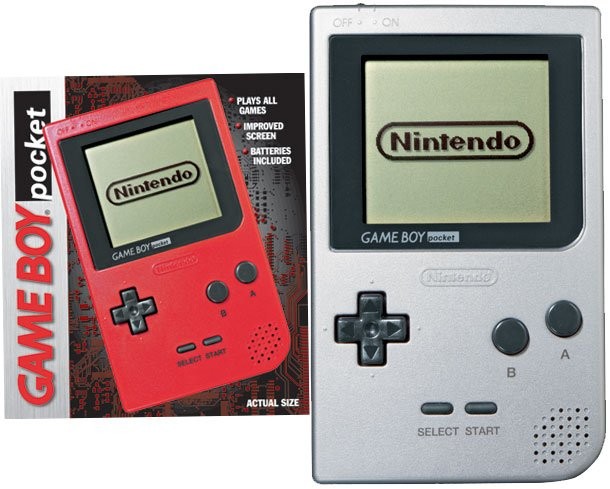
Release: 1996
A streamlined version of the Game Boy, the Game Boy Pocket was smaller and lighter, and used only two AAA batteries instead of the original’s 4 AA batteries. It also featured improved visuals by ditching the Game Boy’s green LCD screen for a black and white display.
Game Boy Light
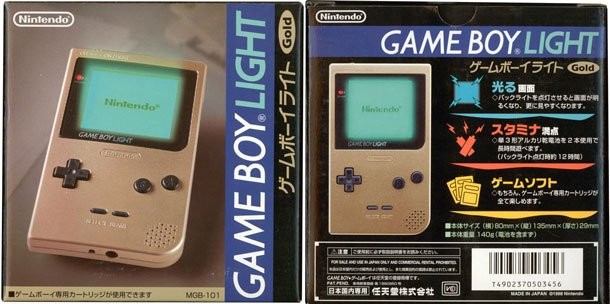
Release: 1998
Released only in Japan, the Game Boy Light was the first Nintendo handheld to feature a backlight display for gaming in the dark, and only required 2 AA batteries.
Game Boy Color
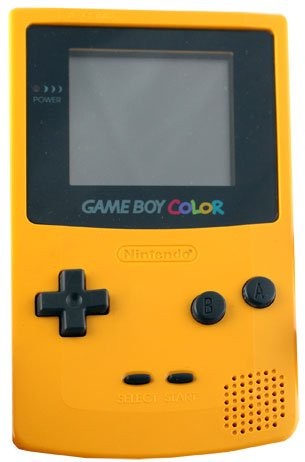
Release: 1998
As the name suggests, the Game Boy Color took Nintendo’s handheld out of the monochromatic age, giving developers a palette of 32,768 colors to work with. It also had four times the amount of memory compared to the original Game Boy, and supported wireless gaming via an infrared communications port.
Game Boy Advance
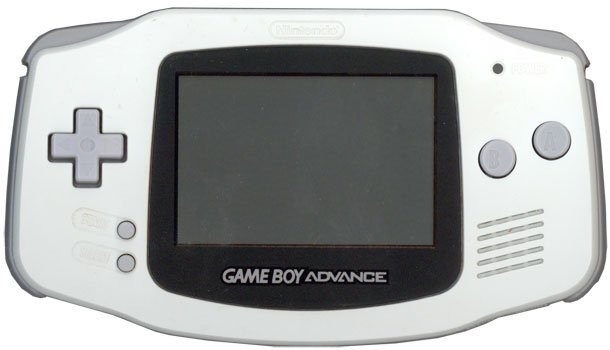
Release: 2001
32-bit graphics and a more powerful processor put the Game Boy Advance’s visuals on par with the Super Nintendo. The game also featured a wider screen format and the addition of shoulder buttons.
Game Boy Advance SP
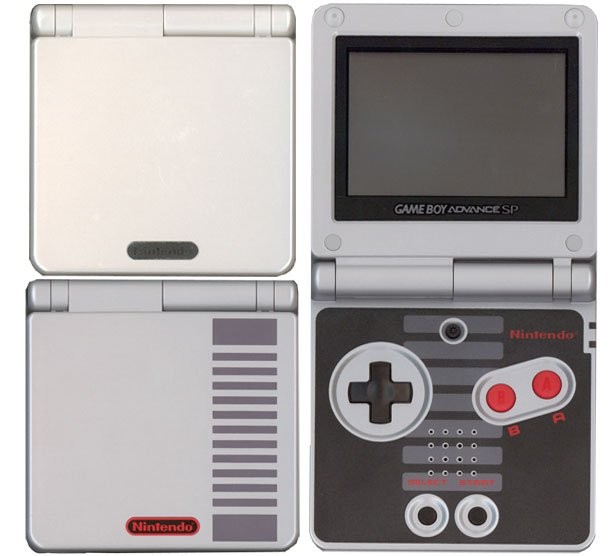
Release: 2003
Not only did it cut down on the GBA’s size thanks to its folding design, the SP employed a backlit screen and internal rechargeable battery. A limited edition SP featured an NES design, and released simultaneously with GBA ports of some classic NES games.
Nintendo DS
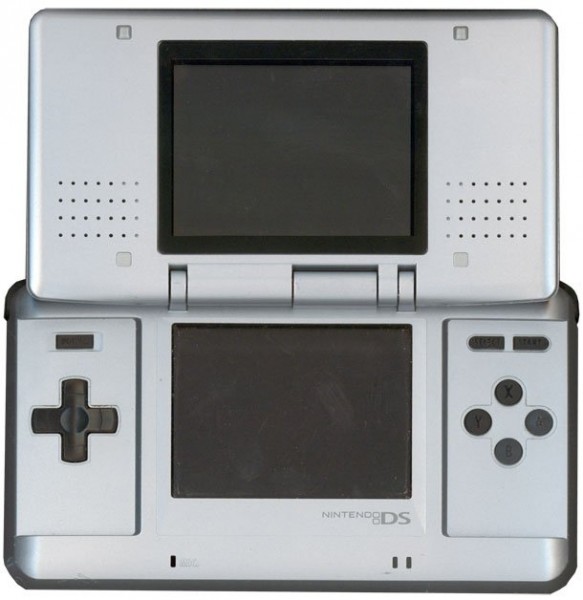
Release: 2004
Returning to the design of its foldable Game & Watch series, the Nintendo DS once again raised the bar for gaming on the go. Capable of rendering 3D graphics, the Nintendo DS features touchscreen controls, stereo speakers, a built-in microphone, and 802.11 Wireless Network Connection.
Game Boy Micro
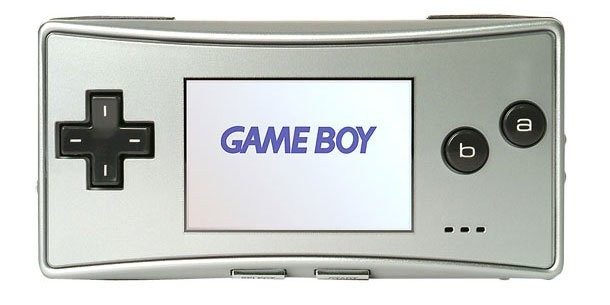
Release: 2005
Despite the successful launch of the DS, Nintendo returned to the GBA hardware one last time for the Game Boy Micro, a system that was smaller than the size of an NES controller. The Game Boy Micro featured a backlit display with adjustable brightness, and swappable faceplates.
Nintendo DS Lite
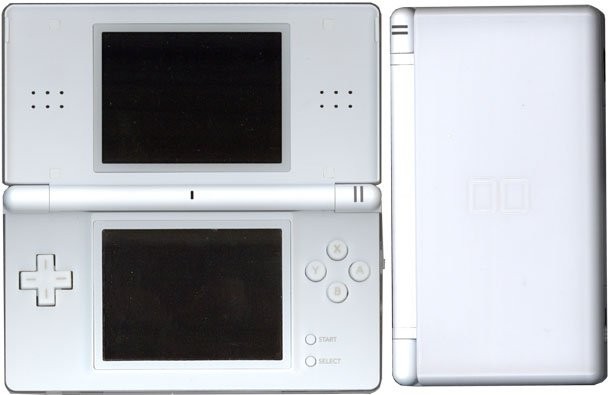
Release: 2006
In what has become a standard practice for Nintendo, the DS Lite offers a smaller and lighter version of its predecessor, with minor improvements. The DS Lite offers four brightness levels compared to the original’s two settings: on and off. While the DS Lite boasts many design improvements, the smaller size results in Game Boy Advance cartridges protruding from the top of the unit.
Nintendo DSi
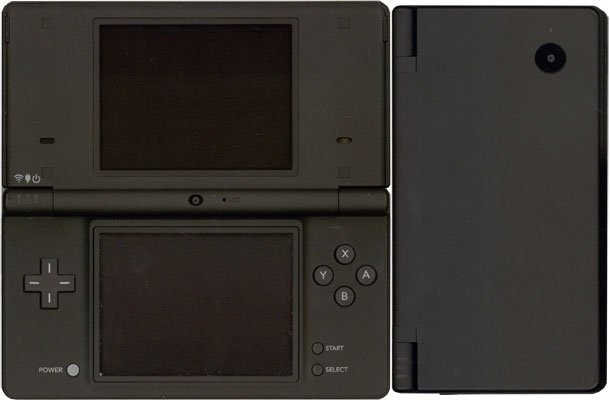
Release: 2008
Even thinner than the DS Lite, the DSi has larger screens than both previous iterations, and (for better or worse) trades in the GBA cartridge slot for an SD card reader. It also features two cameras, and the DSi Shop, which allows owners to buy games over the internet and download them directly to their handheld.
Nintendo DSi XL (LL in Japan)

Release: 2009
The first redesign for the DSi, the DSi XL has screens that are 93% larger than the original DSi. It also features a larger alternate stylus shaped like a real pen, and other minor design improvements. For more on the DSi XL, check out our hands-on impressions.
In addition to these models, there have also been about a bajillion special edition Game Boys released through the years. Do you have one that you're particularly proud of? Share your story in the comments below.

Get the Game Informer Print Edition!
Explore your favorite games in premium print format, delivered to your door.
- 10 issues per year
- Only $4.80 per issue
- Full digital magazine archive access
- Since 1991








